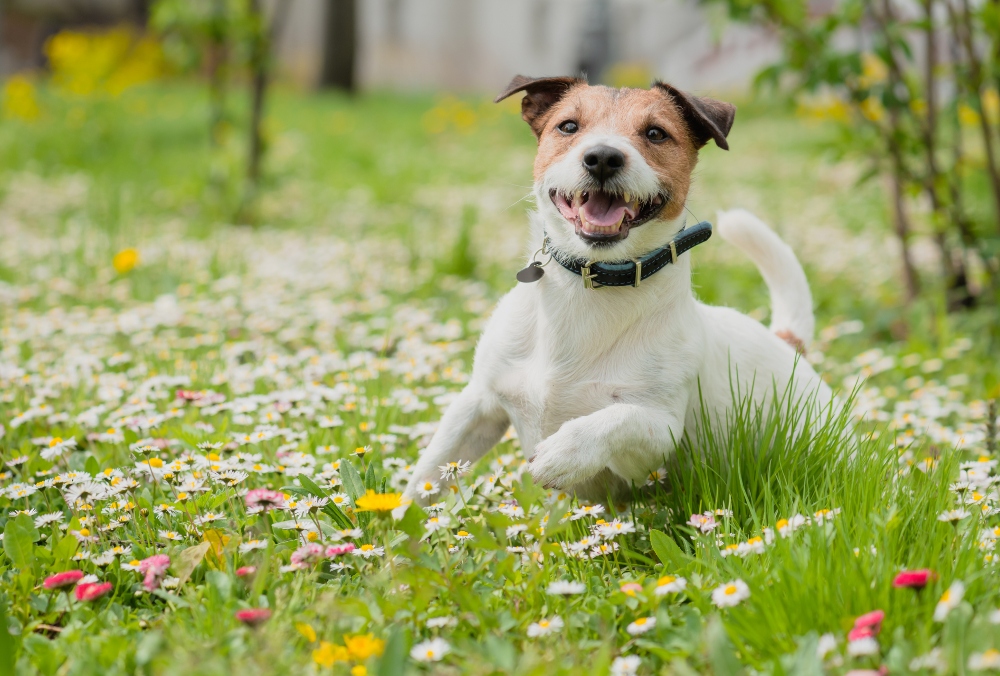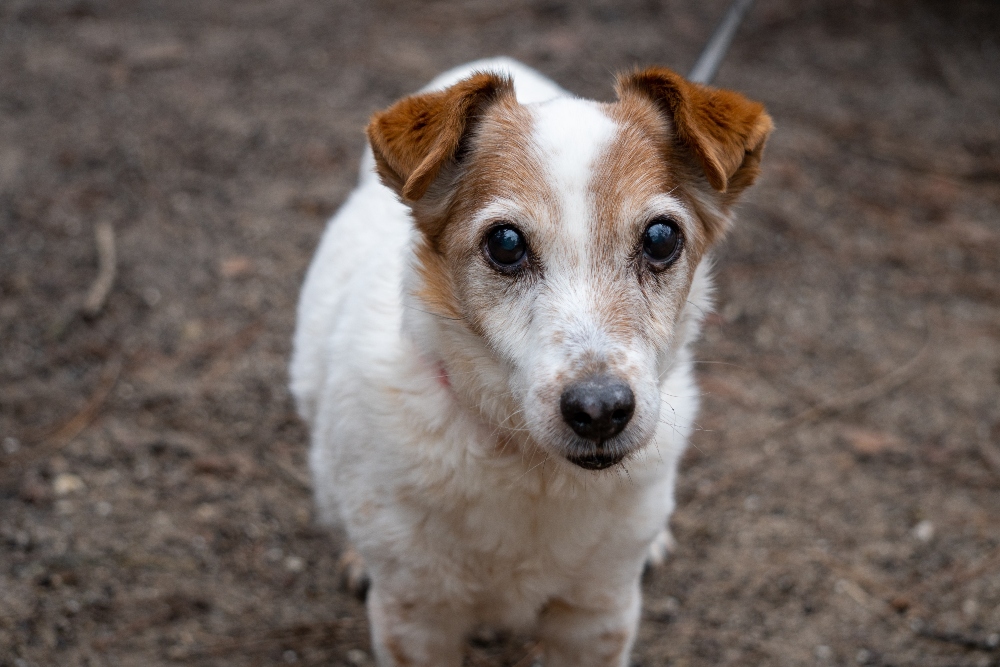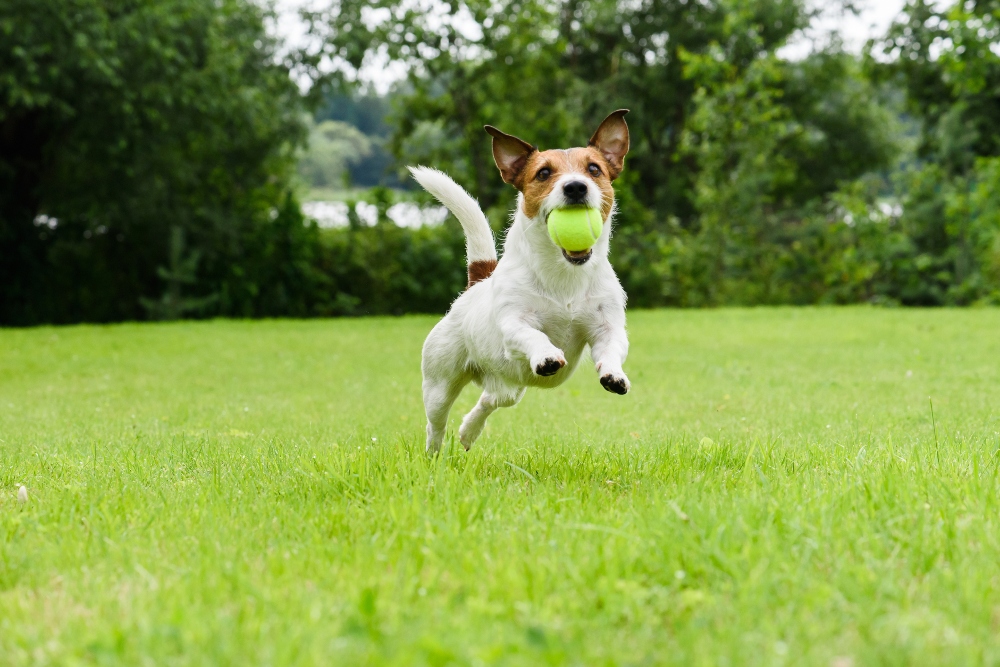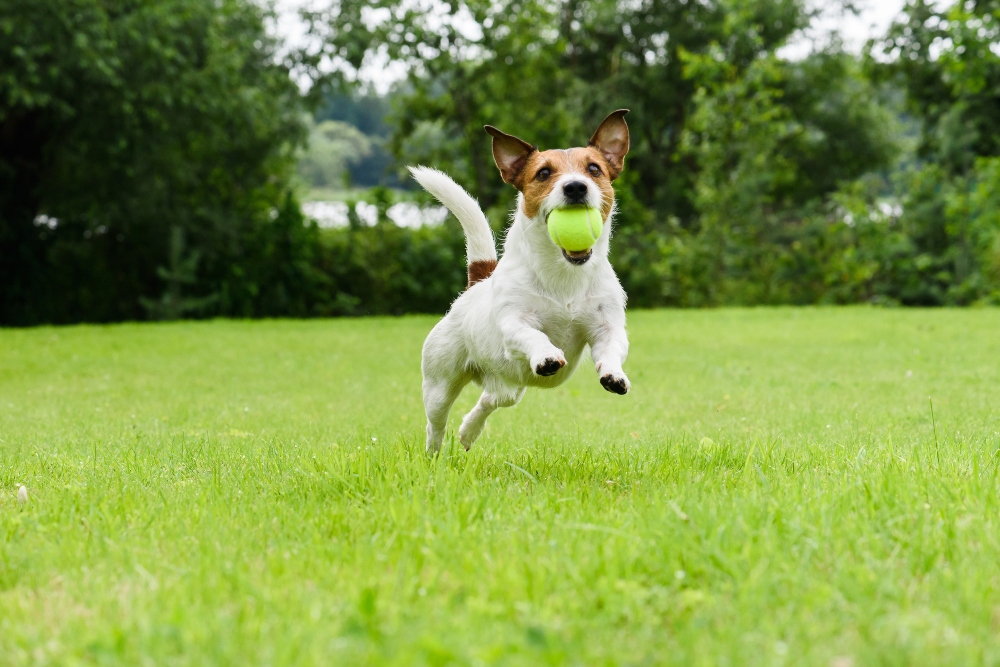Table of Contents
Introduction to Jack Russell Terriers
Jack Russell Terriers are lively and friendly dogs that are small in size. They are an inquisitive breed with lots of personality, but they are not a good fit for everyone. These dogs were developed a couple hundred years ago to hunt foxes. But today, they are primarily known for being clever, charming, and can be a handful to take care of because of their sense of independence and insatiable desire to run, dig, and hunt. Yet they are fairly adaptable dogs with minimal grooming needs and high trainability. Perhaps the most important thing to know about Jack Russell Terriers is that they have a lot of energy and need plenty of time for exercise and play every day.
Size of Jack Russell Terriers
Fully grown Jack Russell Terriers are typically between 10 and 18 pounds. However, some of these dogs can weigh a bit more than that, especially if they aren’t exercised frequently. There are only small differences between the sizes of male and female Jack Russell Terriers.
Here’s how big you can expect your Jack Russell Terrier to get.
| Weight Chart | 3 months | 6 months | 9 months | 12 months |
|---|---|---|---|---|
| Male and Female Jack Russell Terriers | 6-8 pounds | 11-14 pounds | 13-17 pounds | 14-18 pounds |
Jack Russell Terriers stop growing by about 10 to 12 months of age and usually reach 10 to 15 inches in height. Dogs shorter than this are called “Shorty Jacks,” which look more like very small Corgis or Dachshunds.
Characteristics of Jack Russell Terriers
Jack Russell Terriers are sturdy and tough dogs that love to work and be active. They excel at agility sports and have much more energy than many people expect. These are fearless and confident dogs that have a surprising amount of strength and endurance too. Therefore, these dogs do best with families who have enough time, space, and stamina to keep them mentally and physically stimulated.
As you get to know a Jack Russell Terrier’s personality, here’s what you can expect based on his or her breed characteristics.
| Breed Characteristic | Level (High, Medium, Low) |
|---|---|
| Affectionate with People | High |
| Good with Kids | Medium |
| Good with Pets | Medium |
| Need for Exercise | High |
| Energy Level | High |
| Intelligence Level | High |
| Able to Be Trained | High |
| Amount of Barking | High |
| Amount of Shedding | Low |
Jack Russell Terriers are bold and athletic dogs that have been featured in films and on TV. However, first-time dog owners should know that these dogs definitely have a mind of their own, and that training requires a lot of dedication and hard work to keep them from getting bored. Maintaining a routine and creating structure is essential when you have a Jack Russell Terrier in the house.
History of Jack Russell Terriers
Because of this dog’s small size, it might come as a surprise to learn that Jack Russell Terriers were bred for hunting purposes. These dogs’ history can be traced back to the mid-1800s when Reverend John “The Sporting Parson” Russell used them as fox-working dogs. Russell Terriers and Parson Russell Terriers are now considered to be separate breeds. People started breeding Russells to be fast enough to run with hounds while also small enough to bolt prey. The Jack Russell Terrier’s origins are in England, but the breed was further developed in Australia.
These dogs were recognized as a breed by the 1850s. There are breeding records that date back to the 1860s to 1880s, and a Fox Terrier Club formed in 1875 with Reverend Russell as one of the founding members. The need for hunting dogs declined after World War II, so these dogs became more common as companion dogs for families. In 1976, the Jack Russell Terrier Club of America formed. The American Kennel Club has recognized the breed since 1997.
Jack Russell Terrier Standard Information
Jack Russell Terriers are strong and active little dogs with mostly white bodies and a balanced physique. These dogs are confident and have a keen expression. Meanwhile, their coat can feature black, brown, cream, tan, or tri-color markings.
Here is an overview of the breed standard information for Jack Russell Terriers.

Head:
- Flat and moderate skull
- Muzzle slightly shorter than length of skull from occiput to stop
- Small v-shaped button or dropped ears
- Dark, almond-shaped eyes
- Scissor bite with large teeth
Neck, topline, and body:
- Strong neck that tapers into withers
- Body longer than tall
- Slight arch of loin
Forequarters:
- Shoulders well laid back and not overly muscular
- Approximate 90-degree angle from upper arm to scapula
- Elbows set under body
Hindquarters:
- Muscular and strong
- Angles balanced front to rear
- Feet moderately sized, oval-shaped and hard padded
Coat:
- Smooth, broken, or rough
- Weatherproof with an undercoat and harsh outer coat
- Natural coat with minimal grooming
Color:
- White is most common color with black or tan markings
- At least 51 percent white in color
Caring for Jack Russell Terriers
Even though these dogs are small, they have high energy, which is perfect for active and outdoorsy families. They love spending time outside running, chasing, and digging. These are not “couch potato” dogs, so don’t expect a Jack Russell Terrier to calmly sit around and watch movies with you all day! Thankfully, these dogs don’t require extensive grooming, since you’ll need to spend most of your time keeping your Jack Russel Terrier active.
Here are some general tips for taking the best care of a Jack Russell Terrier.
Best Living Environments:
- With an active family and around older children
- House with a fenced yard
- Not recommended for small apartments or condos
- City, suburban, or rural settings can all work
- Best if not around very young children or other pets
Type of Exercise:
- Hikes with family
- Long walks and opportunities to run each day
- Agility courses
- Playing fetch
Mental Enrichment:
- Learning tricks to perform
- Frequent engagement with family members
- Food dispensing toys when left alone
- Socialize the dog early to prevent aggression towards cats and other dogs
Training Strategies:
- Keep training sessions entertaining
- Switch up training with flyball, agility, and lure coursing
- Create challenges for your dog to figure out
- Supervise dogs while outdoors so they don’t escape
Grooming Tips:
- Coats can be smooth, broken, or rough
- Brush once a week
- Trim nails each month
- Check ears each week for excess wax or infection
- Brush teeth daily
These dogs are very intelligent and easily learn tricks. However, they tend to get bored quickly, so it’s in your best interest to keep things fun so that your Jack Russel Terrier stays engaged and mentally stimulated. Jack Russell Terriers also have a strong prey drive, so you’ll want to socialize your dog early to help control that behavior and channel it towards positive play.

Common Health Problems of Jack Russell Terriers
Most Jack Russell Terriers are happy and healthy dogs. If you choose a dog from a breeder, it’s important to find one who screens their dogs for various health conditions that commonly affect Jack Russell Terriers. Never buy a puppy from a breeder without seeing the health clearances from the puppy’s parents.
These are some of the most common health issues that arise with Jack Russell Terriers.
- Eye disease, such as primary lens luxation (PLL), cataracts, and glaucoma
- Patellar luxation
- Deafness
- Legg-Calve-Perthes Disease
Good breeders typically screen their Jack Russel Terriers using BAER testing to check hearing, an eye evaluation performed by a veterinary ophthalmologist, a patella evaluation, and a PLL DNA test. Other genetic tests for Jack Russel Terriers are also available. These dogs tend live an average-to-long life span, which is about 12 to 14 years.
Diet and Nutrition for Jack Russell Terriers
Most adult Jack Russell Terriers will thrive when eating a high-quality, nutritionally complete and balanced dog food. Puppies should eat puppy food until they are 10-12 months old. If you feed your Jack Russell Terrier homemade dog food, make sure you are working from a recipe that is designed by a veterinary nutritionist and is appropriate for your dog’s age and health status.
Feed the amount of dog food needed to keep your pet slim. You should be able to see your Jack Russell Terrier’s waist and feel (but not see) the ribs without having to press too hard. In general, puppies need more calories per day than do adults, but a dog’s needs will vary with his or her activity level and other factors. Don’t leave food out all day for a Jack Russell Terrier to graze on. Divide the total amount of food for the day into at least two meals for adults and three to four meals for puppies. Place the food out in a bowl at approximately the same time of the morning and evening each day.
Talk to your veterinarian if you have any questions about your Jack Russel Terrier’s diet or health.
Where to Adopt or Purchase Jack Russell Terriers
If you want to purchase a purebred Jack Russell Terrier, the American Kennel Club PuppyFinder Marketplace is a good place to look because only registered litters and responsible breeders are listed here. AdoptAPet.com offers resources for finding animal shelters near you that focus on this type of dog. Russell Rescue, Inc is a national rescue organization dedicated to the breed. You can also find city- and state-specific, as well as regional rescue groups that specialize in rehoming Jack Russell Terriers in search of loving families.

Related Breeds
As their name suggests, the Jack Russell Terrier is part of the Terrier Group of dogs. There are many different kinds of terriers, and each type has its own unique characteristics and temperaments. In general, Terriers were bred to hunt and kill vermin. They can be stubborn and have high energy levels. If you are interested in Jack Russell Terriers, you might also want to consider the following related dog breeds for your household:
- Parson Russell Terrier
- Wire Fox Terrier
- Smooth Fox Terrier
- Rat Terrier
- Jag terrier
Pet Insurance for Jack Russell Terriers
To be prepared for whatever may happen in your Jack Russell Terrier’s life, you need health insurance from Healthy Paws. With our Jack Russell Terrier insurance, you can take the best care of your dog’s health in case of an illness, an accident, hereditary condition, congenital condition, chronic condition, or cancer. Whether your Terrier is a puppy, a senior dog, or somewhere in between, we don’t want unexpected medical costs to catch you by surprise.
Request a free Jack Russell Terrier insurance quote on our website to see if a Healthy Paws plan is right for you.









